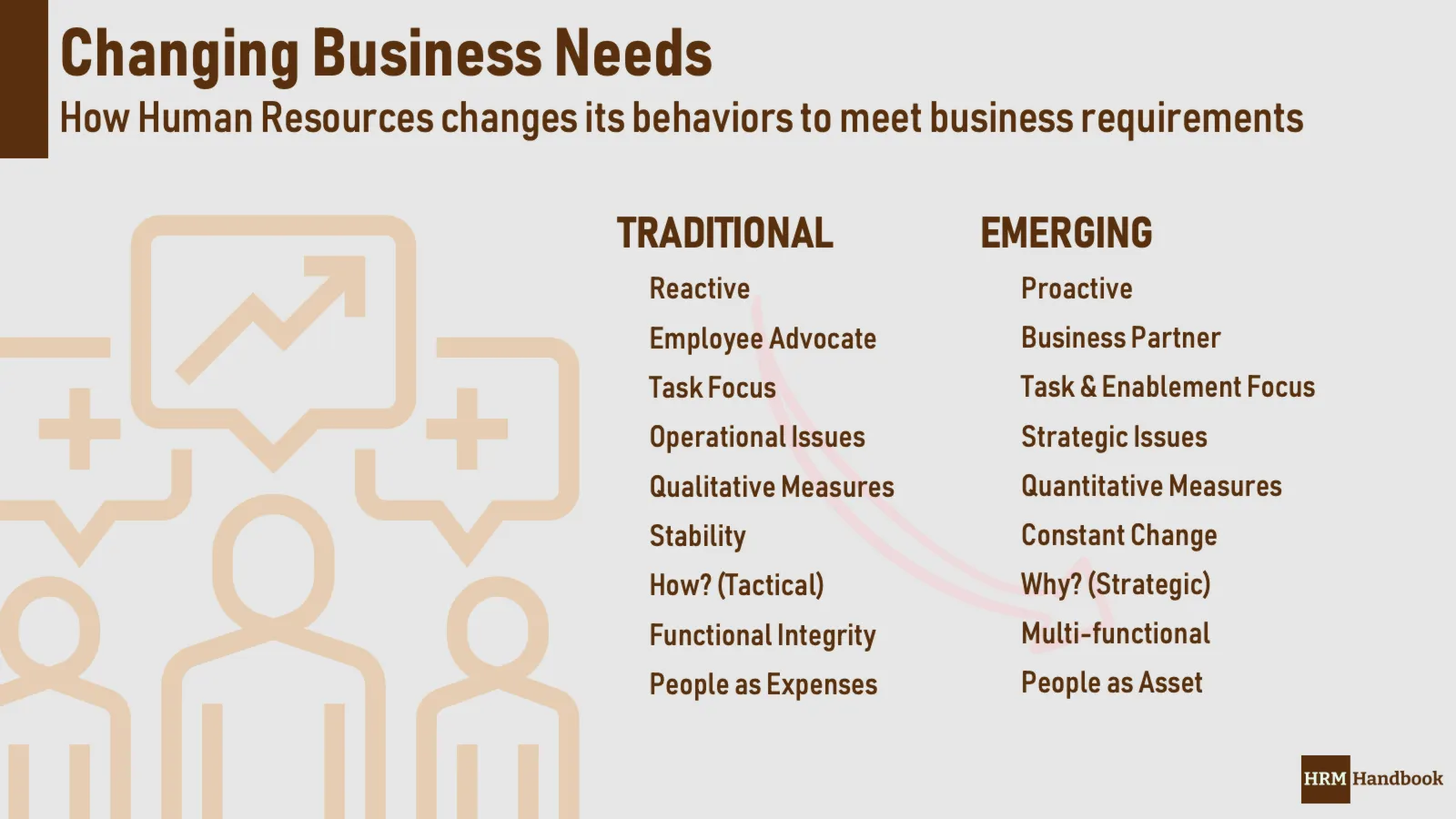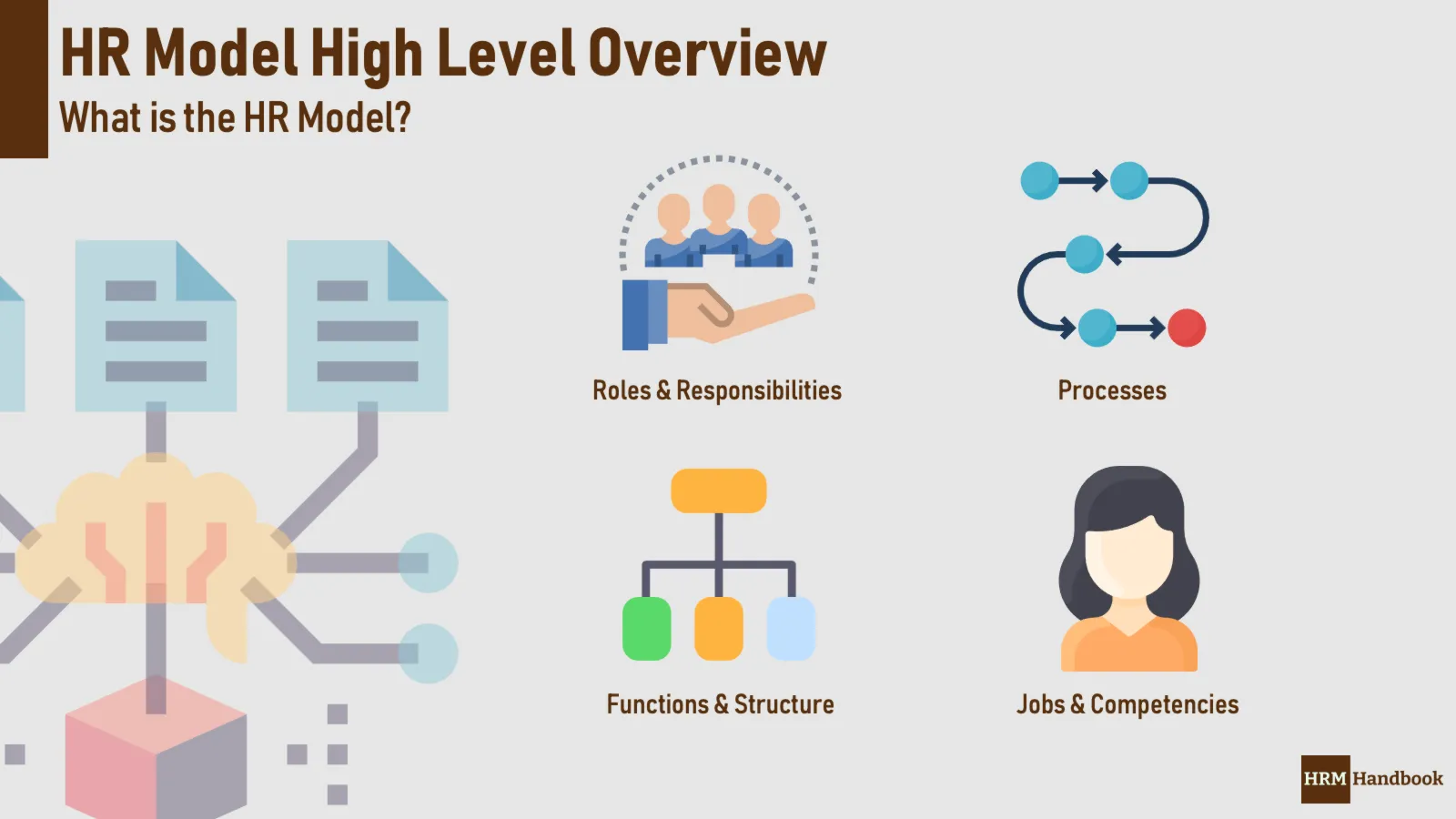HR Model
The modern Human Resources Management is determined by the HR Strategy. The leadership team owns the strategy, and HR executes it. The Strategy sets the strategic targets for Human Resources Department. It describes processes, procedures, people management practices and the position of the organization’s Human Resources on the job market.
The HR Model is the essential document that splits roles and responsibilities, defines key processes, the ownership, and the accountability. The well managed Human Resources Department always has the underlying model in place and employees have the certainty about the responsibilities of the job role and other colleagues.
The HR Model brings the clarity to the HR Department. The HR Management Team designs the set of fundamental principles for the HR operations in the organization, divides high-level responsibilities, plans key HR Processes and assigns individual job roles into specific HR functions. This is the essential task to change the way how HR operates in the business. Managers and employees in HR cannot implement changes if they do not know the master plan. The HR Model acts as the masterplan for everyone in HR. It is also an excellent communication tool.
The HR Model is the written and formalized agreement between HR Managers how they will manage the implementation the strategy of Human Resources. They divide roles and responsibilities. They divide accountabilities among HR Management Team members. They just agree who is responsible for the particular HR function like Compensation and Benefits. They agree who implements all changes and process updates in the function.

A good HR Model addresses following items:
- roles and responsibilities of Human Resources in the organization;
- accountabilities of HR functions;
- key HR functions roles (e.g., Compensation and Benefits, Training and Development);
- key HR Processes;
- job roles required in Human Resources to run critical processes;
- main principles to set the HR Organizational Structure;
- job profiles and job descriptions of essential HR Roles;
- driving principles for the HR Process Management, HR Measurement, and HR Analytics.
It always starts with the basic set-up of the HR Management function and how Human Resources will interact with internal and external clients. Nowadays, most companies implement the model of the HR Front Office, HR Back Office and HR Centers of Excellence. It is a difficult HR Model, but no one invented anything better than this. This organizational set-up requires a detailed model because the organization of processes and employees around the model is crucial. Otherwise, the chaos reigns the HR Department.

It is a precise description how to aim for the high performance, high productivity Human Resources Function in the organization. It is not the implementation plan, but one can be derived from it quickly. It navigates managers and employees. It makes the decision-making processes easier. All employees in HR can make a quick check who in the department has to make a decision, and they can ask for it.
The HR Model is not the competency model of Human Resources. It is more generic and describes how HR should work. On the other hand, the competency model describes required sets of skills and competencies in the organization and Human Resources. The competency model must be linked with the HR Model, but it should not drive it.
There should always exist an explicit connection between the HR Strategy and the HR Model. The strategy is a vision of Human Resources in the future, and the model is a describes a generic plan how to get there. Many parts of the model do not have to be in place at the moment of the design, but the team must work on the implementation of them. The model helps to split initiatives into a smaller manageable pieces and set priorities.
The HR Model also supports the HR Value Proposition. HR can communicate why it exists in the organization, what are the key tasks, key challenges and what is the profile of the employee working in Human Resources. Many young graduates find it attractive because the model helps to draw a challenging and exciting HR Career Path.

The most used and well known is the HR Model by David Ulrich. His work changed Human Resources as we know it. He introduced separated HR functions, proposed the role of the HR Business Partner and redefined the scope of Human Resources in the organization. However, implementing his ideas is a tough job for the majority of companies. He radically changed the work of HR employees, and it took several years just to adapt to it.
However, the design of the effective HR Model is not the administrative tasks. It takes weeks to months to develop a good and solid basis for the design of the modern Human Resources Management function in the organization. The model makes the work of project teams easier because they have a strong base.